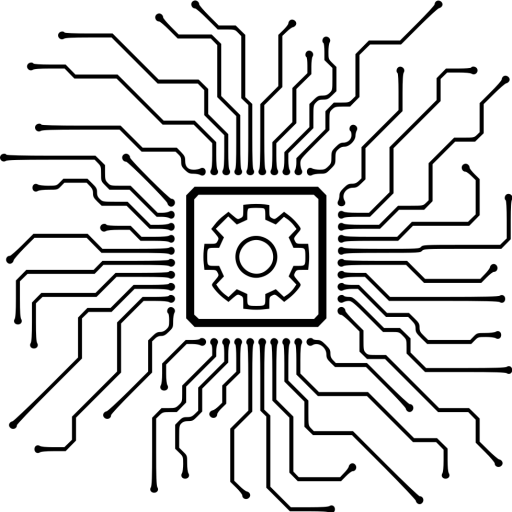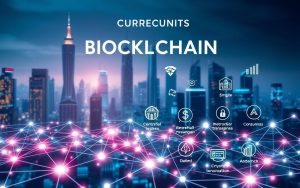Our world is changing fast, thanks to digital innovations. Smartphones and artificial intelligence are now key parts of our lives. They shape how we live every day.
Technological determinism says new tech doesn’t just help us. It changes how we act and interact. This technological impact goes beyond making life easier. It also changes our economy and politics.
In today’s digital age, our cultures are blending together thanks to the internet. Modern technology drives change in all areas of life. It’s creating new ways for us to connect and grow.
How Technology Shapes Society: Communication and Social Structures
Digital innovations have changed how we connect and learn. These changes affect everyone, from schoolchildren to grandparents. They impact both personal relationships and education.
The Evolution of Digital Communication
Communication has moved from letters to instant messaging. Early internet tools like email changed business communication. Now, platforms like WhatsApp and Slack are used for both work and personal chats.
Video calls through Zoom or FaceTime bring people closer. They make it easy to connect across distances. This helps with teamwork and keeping in touch with family.
Impact of Social Media on Relationships
Social media changes how we make friends. It lets us stay in touch no matter where we are. But it also brings new challenges to our mental health.
Research shows mixed results for our wellbeing. On the positive side, it helps those who feel lonely. On the negative side, it can lead to anxiety and sleep problems.
| Platform | Positive Influence | Challenge |
|---|---|---|
| Community building | Privacy concerns | |
| Creative expression | Body image issues | |
| Professional networking | Career pressure |
Changes in Education and Learning
Classrooms now go beyond physical walls. Digital tools make learning flexible. Students can access resources anytime, anywhere.
Teachers use new teaching methods. They mix old ways with new technology. This helps students learn in different ways.
E-Learning Platforms and Accessibility
Online learning platforms make education available to all. Sites like Coursera and Khan Academy offer free courses. They help overcome financial and location barriers.
But, the digital divide is a big problem. Not everyone has internet or devices. This can make education unfair for some.
Educational technology keeps getting better. It promises more tailored learning. The future looks bright for digital tools in education.
Technological Influence on Cultural Norms and Arts
The digital revolution has changed how we make, share, and enjoy culture and arts. It’s not just about new tools. It’s a big change in how we express and consume culture worldwide.
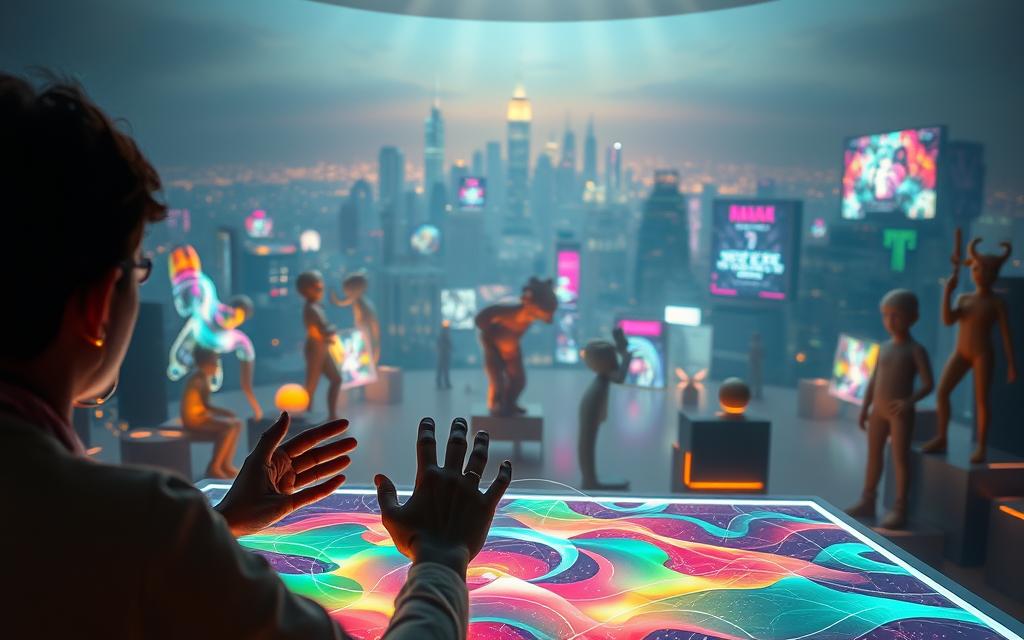
Digital Transformation of Arts and Entertainment
Technology has changed artistic creation in all areas. Old boundaries between art forms are disappearing. Digital tools let artists mix different styles in new ways.
Painters use digital projections, musicians blend sounds, and filmmakers create amazing visuals with CGI. This has opened up new possibilities for artists.
The way we get art has changed too. Digital platforms let artists share their work with people all over the world. This has given more people a chance to be heard, but it also challenges old ways of doing things.
Now, people don’t just watch art. They get involved through social media, virtual reality, and making their own remixes.
Streaming Services and Cultural Consumption
Streaming services have changed how we enjoy culture. With Netflix and Spotify, we can watch and listen whenever we want. These services use algorithms to suggest content just for us.
This has big effects on artists. While it makes art more accessible, artists often don’t get paid as much as they should. Here’s a look at the changes:
| Aspect | Traditional Model | Streaming Model | Impact |
|---|---|---|---|
| Access | Physical/limited | Instant/unlimited | Global reach |
| Discovery | Curated by experts | Algorithm-driven | Personalised trends |
| Revenue | Direct sales | Micro-payments | Artist challenges |
| Cultural Impact | Local/national | Global/international | Cross-pollination |
These platforms help spread culture all over the world. But, they might also make tastes more similar. Algorithms often suggest the same things to people everywhere.
Globalisation and Cultural Exchange
Digital connections have made cultural sharing easier than ever. Social media, video platforms, and tools for working together let us share traditions and ideas instantly.
This sharing leads to new forms of culture. K-pop mixes Western pop with Korean styles, and global food fusions blend tastes from different places.
But, there’s a risk of losing cultural diversity. Western content might overshadow local traditions. The few big companies that own these platforms make this problem worse.
Yet, technology helps keep cultures alive online. Indigenous groups and diaspora communities use digital spaces to share their heritage. This is a big deal in our connected world.
Finding the right balance between sharing culture and keeping traditions alive is key. It’s a big challenge in our globalised world.
Economic Impacts: Innovation and Job Markets
Technology keeps moving forward, changing the way we work and live. It brings new ideas and changes old ways of working. This part looks at how tech changes businesses and jobs.
Advancements in Business and Industry
Today’s companies use tech to work better. They use data to make smart choices and improve services. This helps them stay ahead in a fast-changing world.
New ways of doing business keep popping up. Things like subscription services and digital markets change how we make and sell things. Companies that get on board often get ahead.
Technology makes global supply chains work better. It helps track goods and predict needs. This lets companies react fast to changes and chances.
Automation and the Future of Work
AI and robots are changing jobs in many fields. They take over simple tasks, making some jobs different. People need to learn new skills to keep up.
Even though some jobs might go away, new ones are created. Jobs in tech and maintenance are in demand. The future of work means always learning and being tech-savvy.
| Impact Area | Traditional Economy | Automation Economy |
|---|---|---|
| Primary Skills | Manual labour | Digital literacy |
| Job Security | Long-term contracts | Project-based work |
| Training Needs | Static skill sets | Continuous learning |
| Productivity Drivers | Human effort | Human-machine collaboration |
The Rise of the Gig Economy
Digital platforms make flexible work possible worldwide. The gig economy lets people work on their own terms. They can pick projects and set their own hours.
This new way of working has its ups and downs. It offers freedom but often lacks job security. The changing economic landscape needs new ways to protect workers.
Algorithms on platforms decide who gets work and how much they get paid. This tech shapes how people earn and find jobs. It’s important to understand these systems.
The gig economy shows how tech changes work and earning. It moves us away from old job setups towards new, tech-based ones.
Environmental Consequences of Technological Progress
Technology has a complex relationship with our planet. It has led to environmental problems but also offers solutions. This balance makes innovation a constant challenge.
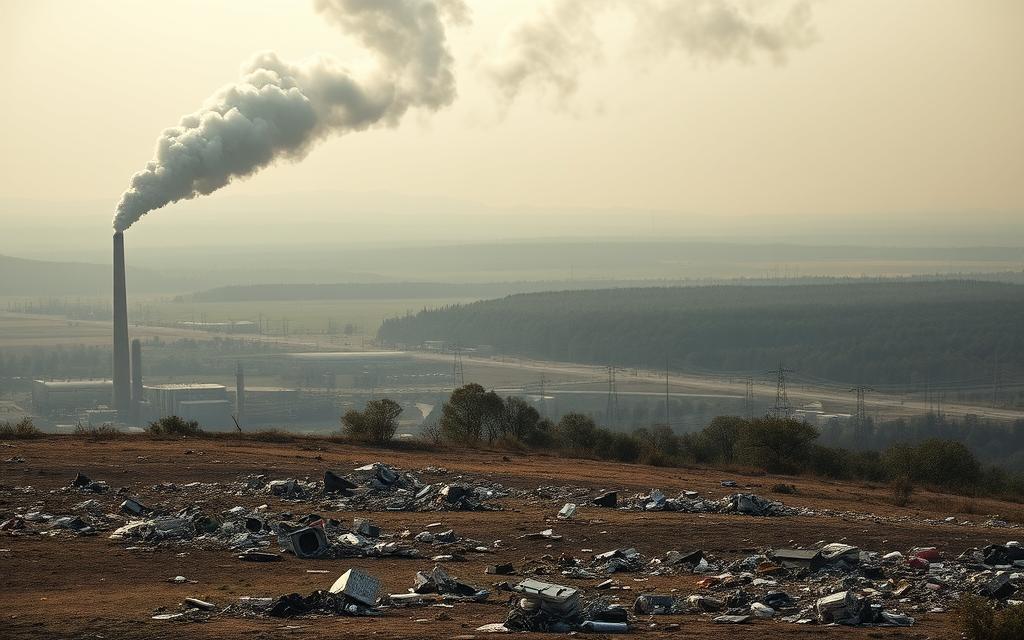
Sustainable Technologies and Green Innovations
The drive for green technology is a positive step. Renewable energy has changed how we power our homes and businesses. Solar panels and wind turbines provide clean energy to millions.
Smart grid technology makes energy distribution more efficient. It reduces waste and saves energy. Devices like LED lights and smart thermostats help us use less energy.
Electric vehicles show how technology can solve old problems. They are a new solution to the issues of older technologies. The circular economy uses technology to reduce waste and use resources better.
E-Waste and Resource Management
The fast pace of technology creates a big problem: electronic waste. Millions of devices are thrown away each year. Finding the right way to dispose of them is key.
Creating technology devices uses a lot of resources and energy. Getting rare earth minerals harms the environment. Data centres and digital systems also use a lot of energy.
Recycling and programmes for producers are starting to help. They aim to balance technology with caring for the environment. The goal is to keep up with new tech without harming nature.
Companies are now designing products with the environment in mind. They make devices that can be fixed and last longer. These steps help reduce the harm of our digital world.
Technology in Politics and Governance
Technology has changed politics and governance a lot. It has brought new ways for governments to work and for people to get involved. But, it also brings new risks that need to be managed.
Digital Democracy and Public Engagement
Digital platforms have changed how we take part in politics. Now, we can interact with government services online. This makes politics more open and clear.
Online services let us do things like apply for permits and pay taxes without going to offices. Governments also use social media to talk to people directly.
Politics has changed with digital tools. Candidates use ads and social media to reach voters. This helps small groups to grow and share their views worldwide.
But, there are big challenges. Misinformation spreads online and can divide people. Social media can also make extreme views seem louder than they are.
Regulators struggle with new businesses like Uber and Airbnb. They work in areas where rules are unclear. Governments must find a way to support new ideas while keeping things fair.
Cybersecurity and National Security
Digital connections make us vulnerable to attacks. Cybersecurity threats target important systems and elections. We need strong defences to protect us.
Systems like energy grids and banks rely on digital tech. This makes them targets for hackers. Keeping these systems safe is a big job.
Keeping elections safe is also a big challenge. We must protect voting systems and data. This is key to keeping trust in democracy.
Data protection is another big challenge. People want their personal info to be safe when they use government services. If it’s not, it can harm both the country and individuals.
Government agencies handle a lot of sensitive data. They need strong security measures to keep it safe. But, there’s always a balance to find between security and personal freedom.
Now, cyber defence is a key part of national security. Countries work together and prepare for cyber attacks. This field is always changing, so we must keep up.
The gap between new tech and old laws is a big problem. Laws often can’t keep up with tech changes. Good digital governance needs to be flexible and adapt quickly.
Ethical Considerations and Future Dilemmas
Technology is moving fast, and we’re facing big ethical questions. These digital age dilemmas are some of the biggest challenges today. We need to think carefully and find balanced solutions.
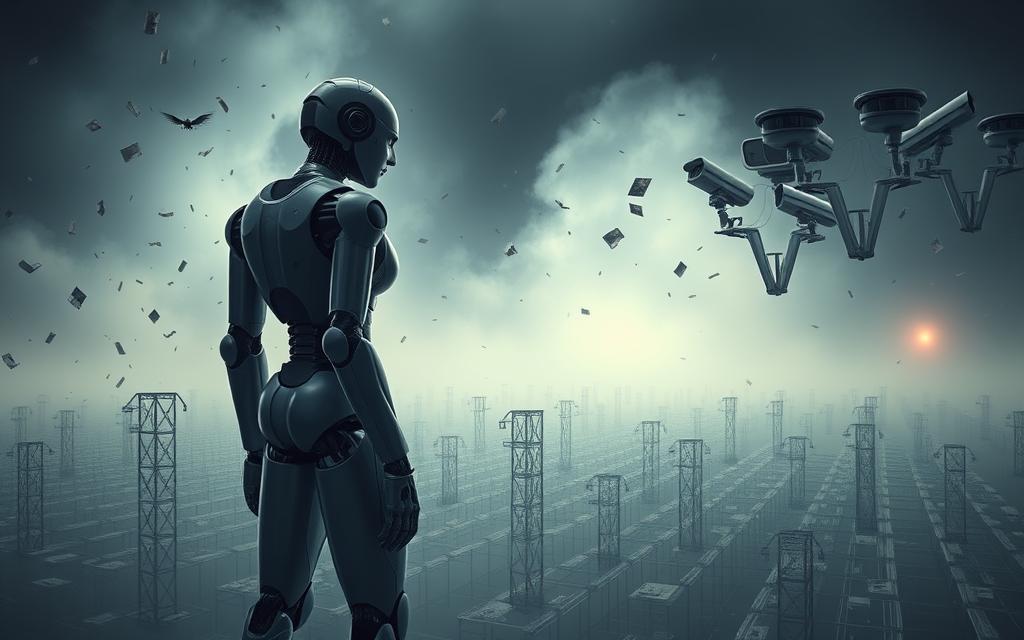
Privacy Concerns in the Digital Age
Modern digital services are convenient but come with a cost – our personal info. Companies gather lots of data from our tech use. They build detailed profiles of what we like and do.
This model raises big questions about our freedom and consent. Many people give up their data privacy for free services without knowing the full impact.
We need to find a balance between new tech and protecting our rights. Research on ethical tech development shows we often ignore these issues early on.
Artificial Intelligence and Moral Questions
AI systems bring big ethical challenges. They can make decisions that reflect and worsen existing biases.
Key AI ethics concerns include:
- Who’s accountable for AI decisions?
- How do we make AI algorithms transparent?
- Is AI fair to all groups?
- Could AI replace many jobs?
As AI gets more independent, we must think about moral responsibility. Who’s to blame when AI makes a bad choice? How can we make sure AI helps humanity, not harm it?
We need to keep talking about these issues. Technologists, ethicists, policymakers, and the public must work together. Only through teamwork can we create a future that’s good for everyone.
Conclusion
Technology has changed our world in big ways. It has transformed how we talk, live, work, and govern. From Apple’s new ideas to Google’s vast information, tech keeps changing us.
This change brings both great chances and big challenges. We must be careful as we move forward. Companies like Tesla show us how to be green, while others face issues like e-waste.
Online platforms connect us all, but they also raise privacy concerns. Groups like the Electronic Frontier Foundation remind us of these issues. We all need to think about the good and bad sides of tech.
We must work together to use technology wisely. It’s up to us to make sure it helps everyone, not just a few. We need to think clearly, be flexible, and work together to make tech work for all.
